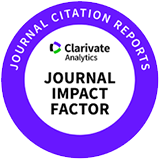Review of the function, substrate affinity, and potential application of bile salt hydrolase originated from probiotic strains of Lactobacillus, Bifidobacterium, and Enterococcus
Received: Nov 28, 2024 ; Revised: Jan 06, 2025 ; Accepted: Jan 06, 2025
Published Online: Jan 17, 2025
Abstract
Bile salt hydrolase (BSH: EC.3.5.1.24) has been used as a biomarker for probiotics for an extended period. It is mostly present in the gut environment of vertebrates. Additionally, it influences the viability of probiotics. This biomarker is considered a promising nutritional supplement due to its unique ability to effectively address elevated blood cholesterol levels, a common issue in modern society. However, the commercialization of BSH has been limited by an incomplete understanding of the intestinal microbiota and the function of BSH. Hence, in this review, we aim to reveal the current advancements in BSH research and outline the necessary areas of investigation for future studies. The review highlights key findings related to the substrate affinity of BSH in probiotic bacteria and its BSH gene phylogeny that have been researched until today, suggesting further research regarding the differences in multiple BSH genes and corresponding differences in BSH affinity.













